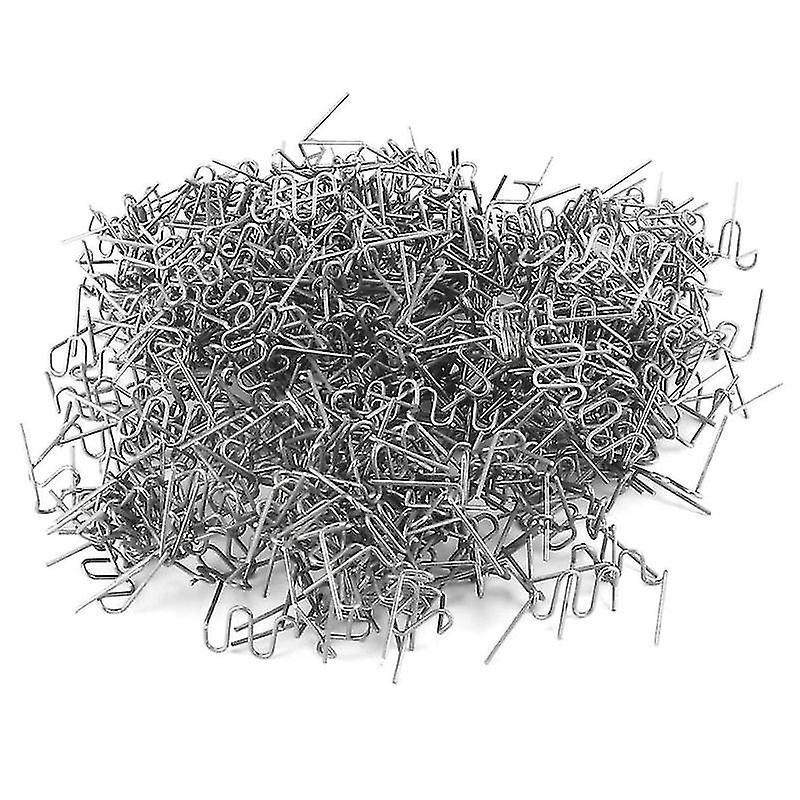The ultimate guide to stapler maintenance and cleaning involves regularly emptying the staple tray, lubricating the moving parts, clearing jams promptly with a paperclip, and wiping the exterior with a damp cloth to ensure smooth and efficient operation.
Stapler Care 101: The Ultimate Guide to Maintenance and Cleaning
Staplers are an essential tool in any office or workspace, used to bind papers together for organization and presentation. However, like any mechanical device, staplers require regular maintenance to ensure they function properly and last a long time. Proper maintenance not only extends the lifespan of the stapler but also ensures smooth and efficient operation, reducing the risk of jams and malfunctions.
Neglecting to maintain a stapler can lead to decreased productivity, frustration, and the need for costly repairs or replacements. Therefore, it is crucial for individuals and businesses to prioritize the maintenance of their staplers to keep their work environment running smoothly.
Regular maintenance also helps to prevent safety hazards. A poorly maintained stapler can lead to accidents and injuries, such as jammed fingers or damaged documents. By keeping staplers in good working condition, users can minimize the risk of accidents and create a safer work environment for themselves and their colleagues.
Overall, the importance of stapler maintenance cannot be overstated, as it not only ensures the longevity and efficiency of the device but also contributes to a safer and more productive workplace.
Tools and Supplies for Cleaning and Maintenance
Before embarking on the maintenance of a stapler, it is important to gather the necessary tools and supplies. The following items are essential for cleaning and maintaining a stapler:
1. Cleaning cloth or paper towels: These are used to wipe down the exterior of the stapler and remove any dust, dirt, or debris that may have accumulated.
2. Isopropyl alcohol: This can be used to clean the metal parts of the stapler, such as the staple driver and anvil, to remove any built-up residue or adhesive.
3. Q-tips or small brushes: These are useful for reaching small crevices and corners of the stapler that may be difficult to clean with a cloth.
4. Lubricant: A light machine oil or silicone-based lubricant can be used to lubricate the moving parts of the stapler, ensuring smooth operation.
5. Replacement staples: It is always a good idea to have a supply of replacement staples on hand in case the current ones become damaged or depleted.
By having these tools and supplies readily available, individuals can effectively clean and maintain their staplers, keeping them in optimal working condition.
Step-by-Step Guide to Cleaning a Stapler
Cleaning a stapler is a relatively simple process that can be completed in just a few minutes. Follow these steps to ensure your stapler remains clean and functional:
1. Unplug or remove any power source from electric or battery-operated staplers to prevent accidents.
2. Use a cleaning cloth or paper towel to wipe down the exterior of the stapler, removing any dust, dirt, or debris that may have accumulated.
3. If the stapler has metal parts, such as the staple driver and anvil, dampen a cloth with isopropyl alcohol and use it to clean these components, removing any residue or adhesive.
4. Use Q-tips or small brushes to reach small crevices and corners of the stapler, ensuring that all areas are thoroughly cleaned.
5. Once the stapler is clean, apply a small amount of lubricant to the moving parts, such as the hinge and staple driver, to ensure smooth operation.
By following these simple steps, individuals can effectively clean their staplers, keeping them in good working condition and preventing malfunctions.
Lubricating Your Stapler for Smooth Operation
Lubrication is an important aspect of stapler maintenance, as it helps to ensure smooth and efficient operation. Over time, the moving parts of a stapler can become dry and stiff, leading to jams and malfunctions. By applying a small amount of lubricant to these parts, individuals can reduce friction and wear, prolonging the lifespan of the stapler and preventing issues such as misfiring or incomplete staples.
When lubricating a stapler, it is important to use the right type of lubricant. A light machine oil or silicone-based lubricant is ideal for this purpose, as it will not attract dust or debris that could interfere with the stapler’s operation. To lubricate the stapler, simply apply a small amount of the lubricant to the moving parts, such as the hinge and staple driver, and then operate the stapler several times to distribute the lubricant evenly. It is important not to over-lubricate the stapler, as this can lead to excess oil or grease buildup, which can attract dirt and cause malfunctions.
By regularly lubricating the moving parts of a stapler, individuals can ensure smooth and efficient operation, reducing the risk of jams and malfunctions and extending the lifespan of the device.
Troubleshooting Common Stapler Issues
Despite regular maintenance, staplers can still experience issues from time to time. Understanding how to troubleshoot common problems can help individuals address these issues quickly and effectively. Some common stapler issues and their potential solutions include:
1. Jammed staples: If the stapler becomes jammed, carefully remove the jammed staples using a pair of pliers or a staple remover. Ensure that the staple path is clear of any obstructions before attempting to use the stapler again.
2. Incomplete staples: If the stapler is not fully driving the staples into the paper, check to see if the staples are the correct size and type for the stapler. If they are, the stapler may need to be cleaned and lubricated to ensure smooth operation.
3. Misfiring: If the stapler is misfiring or not firing at all, check to see if the staples are loaded correctly and if the stapler is properly aligned with the paper. If these factors are not the issue, the stapler may need to be cleaned and lubricated to address any mechanical issues.
By understanding how to troubleshoot common stapler issues, individuals can quickly address any problems that arise, ensuring that their stapler remains in good working condition.
Regular Inspections for Wear and Tear
In addition to regular cleaning and lubrication, it is important to conduct regular inspections of the stapler for signs of wear and tear. Over time, the moving parts of a stapler can become worn or damaged, leading to malfunctions and reduced performance. By inspecting the stapler regularly, individuals can identify and address any issues before they escalate, ensuring that the stapler remains in good working condition.
During a regular inspection, individuals should check for the following signs of wear and tear:
1. Bent or damaged staples: If the staples are bent or damaged, they may not feed properly through the stapler, leading to jams and malfunctions.
2. Loose or misaligned parts: If any parts of the stapler are loose or misaligned, they may not function properly, leading to issues such as misfiring or incomplete staples.
3. Excessive wear on the moving parts: If the moving parts of the stapler show signs of excessive wear, such as rust, corrosion, or deformation, they may need to be replaced to ensure smooth operation.
By conducting regular inspections for wear and tear, individuals can identify and address any issues with their stapler, ensuring that it remains in good working condition and preventing malfunctions.
Proper Storage and Handling of Staplers
Proper storage and handling of staplers are essential for maintaining their condition and performance. Improper storage and handling can lead to damage, malfunctions, and reduced lifespan. To ensure that staplers remain in good working condition, individuals should follow these guidelines for storage and handling:
1. Store staplers in a clean, dry, and well-ventilated area to prevent rust, corrosion, and damage from environmental factors.
2. Avoid exposing staplers to extreme temperatures, as this can affect their performance and lifespan.
3. Handle staplers with care, avoiding dropping or mishandling them, as this can lead to damage and malfunctions.
4. When transporting staplers, use a protective case or cover to prevent damage from bumps and impacts.
By following these guidelines for storage and handling, individuals can ensure that their staplers remain in good working condition, prolonging their lifespan and performance.
Extending the Lifespan of Your Stapler
Proper maintenance and care can significantly extend the lifespan of a stapler, ensuring that it remains in good working condition for years to come. In addition to regular cleaning, lubrication, and inspections, individuals can take the following steps to extend the lifespan of their stapler:
1. Use the correct staples: Using the correct size and type of staples for the stapler can prevent damage and malfunctions, ensuring smooth operation.
2. Avoid overloading the stapler: Overloading the stapler with too many sheets of paper can lead to jamming and damage, reducing the lifespan of the device.
3. Use the stapler for its intended purpose: Using the stapler for tasks beyond its intended capacity can lead to wear and tear, reducing its lifespan.
4. Seek professional maintenance and repairs when needed: If the stapler experiences issues that cannot be addressed through regular maintenance, individuals should seek professional maintenance and repairs to ensure that the device remains in good working condition.
By taking these steps to extend the lifespan of their stapler, individuals can ensure that the device remains in good working condition, reducing the need for costly repairs or replacements.
Safety Precautions When Maintaining a Stapler
When maintaining a stapler, it is important to take safety precautions to prevent accidents and injuries. The following safety precautions should be observed when cleaning, lubricating, and inspecting a stapler:
1. Unplug or remove any power source from electric or battery-operated staplers to prevent accidents.
2. Use caution when handling sharp or moving parts of the stapler to prevent cuts and injuries.
3. Avoid over-lubricating the stapler, as this can lead to excess oil or grease buildup, which can attract dirt and cause malfunctions.
4. Keep the stapler and maintenance tools out of reach of children and pets to prevent accidents and injuries.
By observing these safety precautions, individuals can ensure that they maintain their stapler safely and prevent accidents and injuries.
Professional Maintenance and Repair Options
In some cases, staplers may require professional maintenance and repairs to address issues that cannot be resolved through regular maintenance. When seeking professional maintenance and repair options for a stapler, individuals should consider the following:
1. Manufacturer’s service center: Many stapler manufacturers offer service centers where individuals can send their staplers for maintenance and repairs by trained technicians.
2. Authorized repair technicians: Authorized repair technicians are trained and certified to work on specific brands and models of staplers, ensuring that the device is properly maintained and repaired.
3. Local repair shops: Local repair shops may offer maintenance and repair services for staplers, providing a convenient option for individuals who need their staplers serviced.
By seeking professional maintenance and repair options, individuals can ensure that their staplers are properly maintained and repaired, prolonging their lifespan and performance.
In conclusion, the maintenance of staplers is essential for ensuring their longevity, efficiency, and safety. By following a regular maintenance routine, using the right tools and supplies, and observing safety precautions, individuals can keep their staplers in good working condition, reducing the risk of malfunctions and accidents. Additionally, seeking professional maintenance and repair options when needed can further extend the lifespan and performance of staplers, ensuring that they remain a reliable tool in any office or workspace.


Leave a Reply